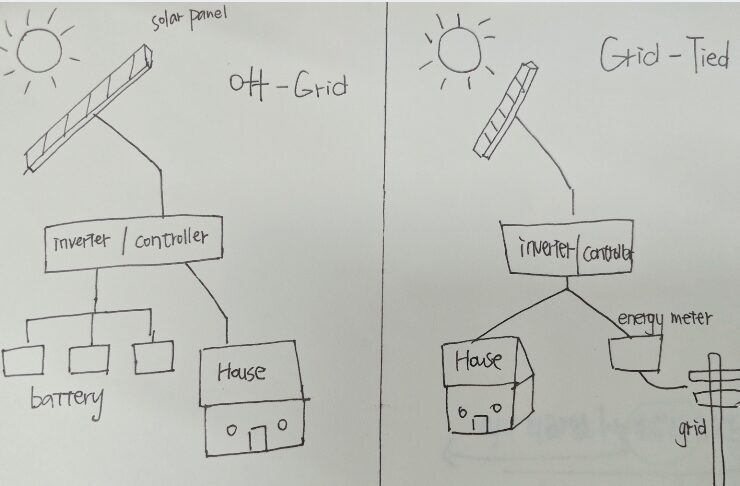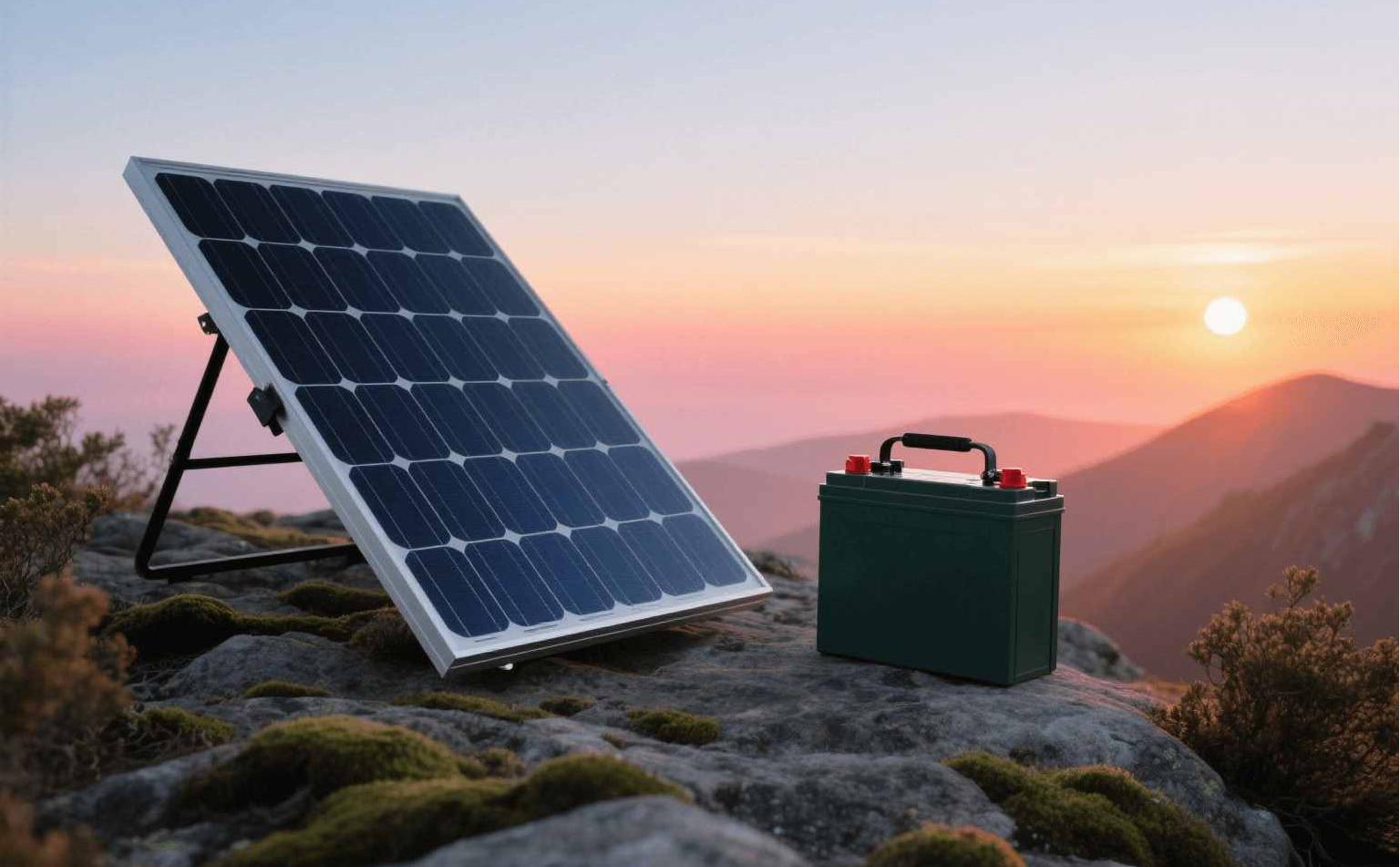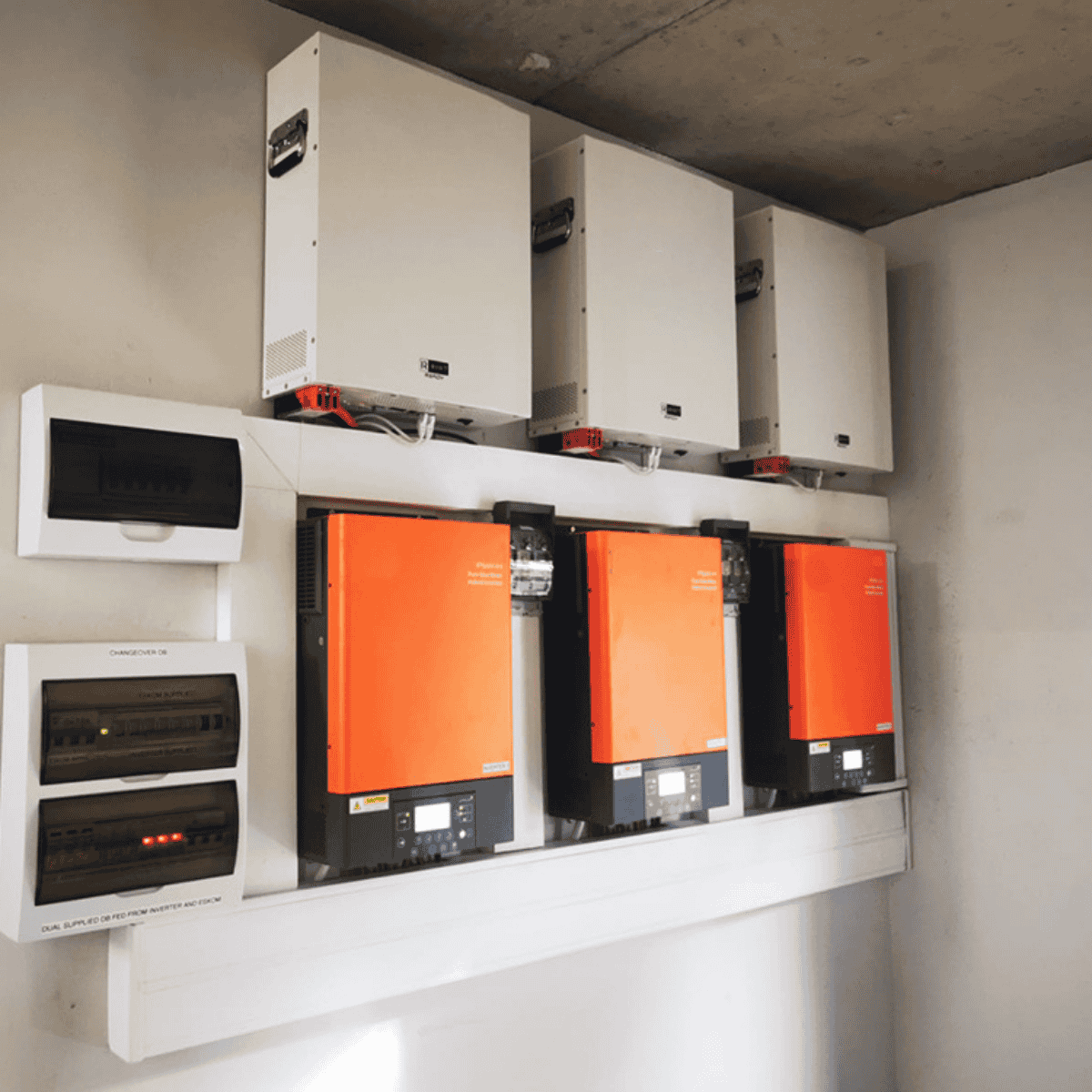Is it true that off-grid solar systems can offer complete energy independence? While many believe this to be the case, the reality is more nuanced. Understanding the intricacies of components, costs, and consumption can greatly impact your experience. As you explore the advantages and challenges of these systems, you'll uncover factors that could shape your decision-making process. What might surprise you about the setup and maintenance of an off-grid solar system? Let's explore these together.
An off-grid solar system operates independently from the local utility grid, meaning you rely solely on solar energy and battery storage for your power needs.
This setup offers significant off-grid benefits, including complete energy independence. You generate your own electricity using solar panels, which capture sunlight and convert it to usable power.
A solar charge controller manages the energy flow to your battery bank, ensuring efficient storage for later use. This system provides you with control over your energy source, eliminating monthly electric bills and protecting you from fluctuating energy prices.
While initial costs can be higher, the long-term savings and resilience against outages make off-grid solar systems a compelling choice for those seeking autonomy in their energy consumption.
Related article: https://gdleappower.com/how-solar-batteries-can-lower-your-electricity-bills/
To build an efficient off-grid solar power system, you’ll need four key components: solar panels, a charge controller, batteries, and an inverter. Each element plays a critical role in capturing, storing, and converting solar energy for your use.
Solar panels are the heart of an off-grid solar power system, capturing sunlight and converting it into electricity. There are many types of solar panels like mono-crystal line,poly-crystal line, and thin-film panels, each with varying efficiencies and costs.
Based on available space and sunlight conditions, you can also choose between ground-mounted and rooftop systems. Ground-mounted systems are generally better suited to areas with ample space, while rooftop systems are ideal for locations with limited ground space.

In an off-grid solar power system, the charge controller plays a critical role in managing the flow of electricity from the solar panels to the battery bank. This device prevents overcharging and deep discharging of batteries, ensuring their longevity and peak performance.
There are two main charge controller types: PWM (Pulse Width Modulation) and MPPT (Maximum Power Point Tracking). PWM controllers are simpler and less expensive but less efficient than MPPT controllers, which maximize energy harvest from the solar panels.
Related article: https://gdleappower.com/how-to-safely-charge-lifepo4-batteries/
Batteries are the backbone of an off-grid solar power system, providing essential energy storage for use during periods without sunlight.
Understanding battery types and maintenance is crucial for maximizing efficiency and lifespan.
Common Battery Types:
Finally, your decision between lead-acid and lithium batteries should be based on your specific needs, whether you choose the more affordable option or the more efficient one.
The inverter plays an essential role in an off-grid solar power system by converting the direct current (DC) electricity generated by solar panels into alternating current (AC) electricity, which is used by most household appliances.
Here are some common types of inverters on the market: pure sine wave, modified sine wave, and square wave inverters. Pure sine wave inverters produce an output current waveform that is identical to standard AC utility power. They are suitable for all electrical appliances, including light bulbs and electric heaters.
Modified sine wave inverters produce an output waveform that approximates a sine wave. They are less expensive than pure sine wave inverters, but they deliver lower output quality.
Square wave inverters produce a square wave current, which rapidly switches between positive and negative voltage values. This waveform structure is simple, but it may damage certain electrical appliances.
Choosing the right inverter type affects not just performance, but also your overall energy management. Higher inverter efficiency translates to less energy loss, ensuring you maximize the power from your solar setup.
While exploring energy independence, off-grid solar systems offer a range of compelling advantages that cater to those seeking self-sufficiency.
Here are three key benefits you should consider:
While the initial investment may be higher, the environmental benefits and the potential for lower long-term costs make off-grid solar an appealing choice for those who prioritize sustainability and autonomy.
When comparing on-grid and off-grid solar systems, you'll notice key differences in how they handle energy needs and supply.

Accessing grid power represents a fundamental distinction between on-grid and off-grid solar systems.
While on-grid systems connect to the utility grid, allowing you to draw power when needed, off-grid systems rely solely on solar energy, providing independence benefits.
If you live in an area always suffering inconvenience from power outages, an off-grid solar system is ideal for maintaining a stable power supply. If you want to reduce your carbon footprint and save on electricity bills, a grid-connected solar power system may be a good solution, because you can sell excess electricity to the power utility during peak hours to optimize energy utilization.
In an on-grid system, any excess energy you produce gets sent back to the utility grid, allowing you to earn credits via net metering.
However, off-grid systems require a different approach. Here, surplus energy is stored in batteries for later use, granting you complete energy independence.
This power storage guarantees you have electricity available during low sunlight periods, such as nights or cloudy days.
Power generation exceeding demand highlights a significant difference between on-grid and off-grid solar systems, particularly during grid outages.
While on-grid systems rely on the utility, off-grid systems provide you with power reliability and energy independence, ensuring you maintain electricity even when the grid fails.
Here are three key distinctions:
Ultimately, off-grid solutions empower you to control your energy sources and enhance your resilience against unpredictable outages.
When you compare on-grid and off-grid solar systems, one of the most significant differences lies in electricity charges and how each system impacts your financial obligations.
With on-grid systems, you typically incur minimal electricity charges, benefiting from net metering and credits for excess energy sent back to the grid.
However, off-grid systems eliminate electric bills altogether, allowing you to achieve true energy independence. You invest in battery storage, which captures solar energy for later use, leading to long-term electricity savings.
This setup empowers you to take control of your energy needs without reliance on utility providers, ensuring that your power supply remains consistent, even during outages.
Ultimately, the choice hinges on your desire for control and financial strategy.
Choosing between an on-grid and off-grid solar system depends largely on your specific energy needs, location, and lifestyle preferences. Here are three key considerations to help you decide:
Ultimately, your choice should align with your desire for control over energy consumption and financial considerations.
How can you determine the right size for your off-grid solar system? Start by evaluating your energy consumption.
Calculate your daily kilowatt-hour (kWh) needs based on the wattage and usage of your appliances. Once you have this figure, divide it by the number of peak sun hours in your location to figure out the required solar panel output. This process is known as solar system sizing.
If your energy needs are under 1,000 watts, a 12V system may suffice; for larger demands, consider a more robust system. If you not sure at all, informing your seller about your household's electricity consumption, the appliances you own, and your location. They will provide a solution tailored to your needs and actual usage.
Remember to factor in battery storage for nighttime use and cloudy days. Accurate sizing guarantees you maintain control over your energy independence without overspending on unnecessary capacity.
Understanding the costs associated with off-grid solar systems is essential for budgeting your energy independence. These systems can be a significant investment, but with the right knowledge, you can manage these expenses effectively.
Here’s what to evaluate:
In the domain of energy independence, choosing an off-grid solar system is like commencing on a journey through uncharted waters. You’ll navigate the complexities of components, costs, and sizing, but each decision steers you toward self-sufficiency and sustainability. By harnessing the sun's power, you're not just generating electricity; you're building a lifeboat that protects you from the stormy seas of fluctuating energy prices. Embrace this adventure, and let the sun guide your path to energy autonomy.
Like a resilient warrior, off-grid solar systems can still generate power in cloudy or snowy conditions, though energy efficiency may decrease. They adapt to weather conditions, ensuring you maintain control over your energy needs.
For off-grid solar systems, guarantee regular battery maintenance and panel cleaning. Check battery levels and connections frequently, while cleaning panels helps enhance efficiency. These steps keep your system reliable and performing effectively, giving you greater energy control.
Think of your off-grid solar batteries as the heart of your system; their lifespan typically ranges from 5 to 15 years. Maintaining solar efficiency and proper care can maximize this crucial component’s longevity.
Yes, off-grid systems offer scalability. You can easily expand your setup by adding more solar panels, batteries, or inverters, ensuring your system adapts to increased energy demands and provides the control you desire for your energy needs.
Harnessing solar energy, off-grid systems offer significant environmental benefits, reducing reliance on fossil fuels and lowering carbon footprints. By embracing this technology, you gain control over energy consumption while promoting sustainability and protecting the environment for future generations.


"We strive to deliver real value for our customers through distinctive design, superb quality and excellent customer service at prices that reflect the real worth of our products."
---Emmy Zheng, Author



